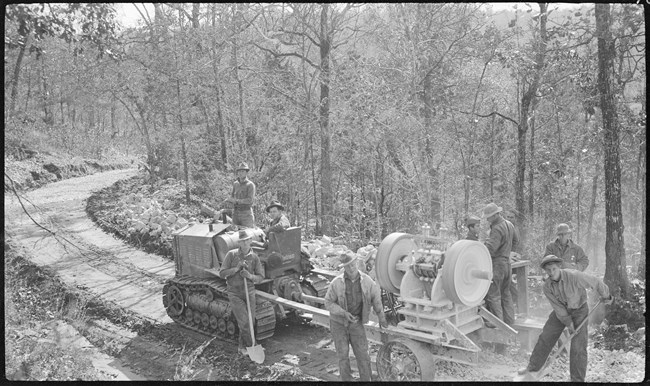
NPS Photo/ #maca_27041(A) The Beginning of the Civilian Conservation CorpsAfter the stock market crash of 1929, an economic panic and the Great Depression took over the country, which caused almost 15 million Americans to be out of work, homeless, and starving. At the same time, there was a lack of effective conservation policies. Farmers often plowed under healthy topsoil and replaced it with non-drought resistant crops which, along with overplanting, lack of crop rotation, and a severe drought, exhausted the soil and exacerbated the economic miseries that already gripped the county. The sum of all these factors inadvertently created a massive dust storm known as the Dust Bowl. In response to the economic and agricultural crisis, President Franklin Roosevelt created the New Deal, a series of economy boosting programs which included the creation of the Civilian Conservation Corps (CCC). 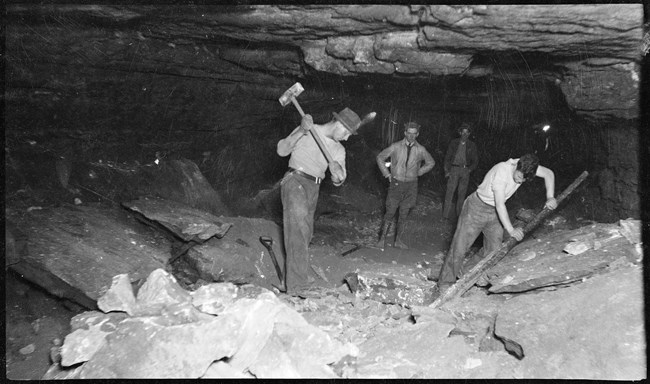
NPS Photo/ #maca_27598 Conserving Resources and Providing JobsOn April 5, 1933 the CCC called on young men between the ages of 18 and 25, who were willing to work hard on long and laborious tasks. They were a peace time army and pioneers of conservation, rebuilding our nation from the soil up and creating jobs and a sense of pride along the way. 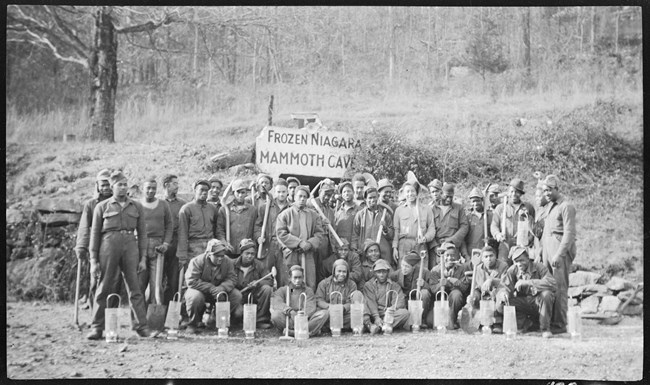
NPS Photo/ #maca_27383(A) Shaping a New ParkIn 1926 Congress passed an Act to accept lands donated to the government to form a brand new national park at Mammoth Cave in Kentucky. At the time the Mammoth Cave region was full of farmland and homesteads and needed to be prepared for it’s future park service status. Construction and improvements took place on both the surface and in the cave itself. This included destroying undesirable structures and reducing fire hazards, and building trails, a park amphitheater, as well as many other park structures to support the park’s mission. Four CCC camps were established in the park with each of the camps housing 200-250 young men. The CCC often sent workers far from home to work on projects, yet several men from the local communities were part of the Mammoth Cave camps. Former cave guides, Arthur and Clifton Bransford, were part of “Camp #1”, an all black CCC camp. While segregation remained within the camps, the CCC program was a notable instance of black and white men being paid the same wages during the Depression Era. 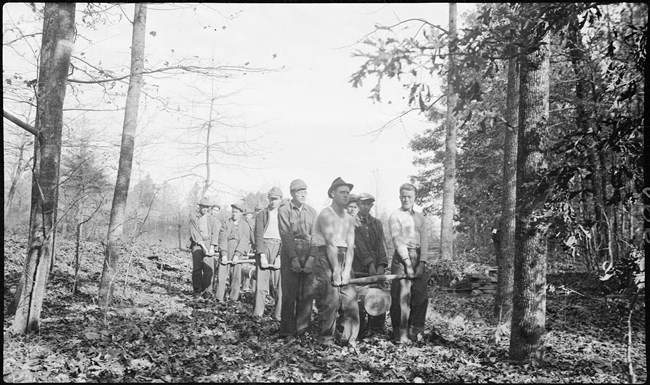
NPS Photo/ #maca_27740(B) CCC’s Legacy at Mammoth CaveEvidence of the CCC can still be seen throughout Mammoth Cave National Park. Many structures that were built by the CCC are still standing today. These include recently remodeled employee housing and other buildings in the park’s administration area. The famous CCC stonework can be seen on the Three Springs pump house and chlorination house, around the park’s amphitheater, and along the banks of the Green River Ferry crossing where rocks were stacked to keep the banks from eroding. Many of the trees that are seen today are from the CCC era. With much of the area being barren of trees when the park was created, the CCC took over 9,000 man hours to plant more than 1 million trees in what is now Mammoth Cave National Park. The largest transformation that occurred was inside the cave itself. Many of the cave’s trails were single-file and made up of flat rocks stacked end to end. The CCC worked to improve and create what would be 24 miles of trail through the cave passageways. Another structure that you can still see today that the CCC constructed is the Frozen Niagara entrance and the rock landscaping around it. 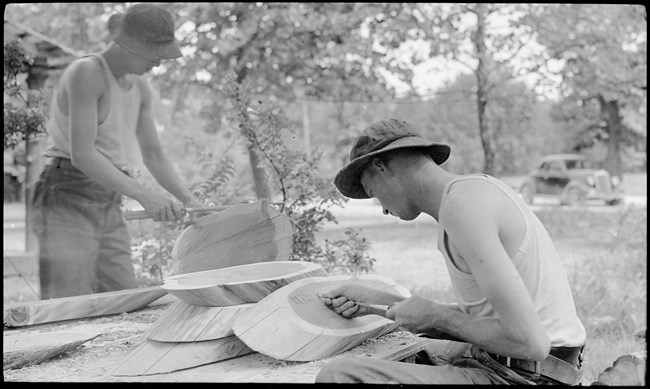
NPS Photo/ #maca_28352 Explore MoreView an online photo library containing a collection of over 5,000 nitrite negatives that document the work and life of the CCC during the 1930’s at Mammoth Cave. This historical collection is made possible by the National Park Service, the Institute of Museum and Library Services and Clemson University. |
Last updated: February 25, 2021
